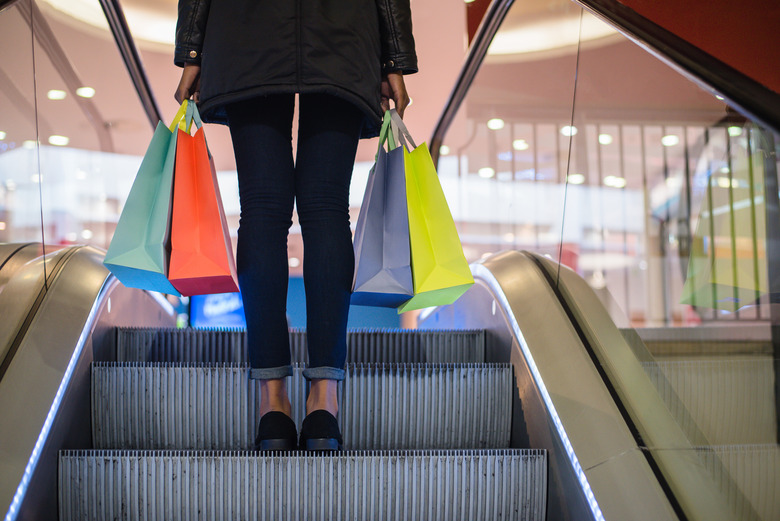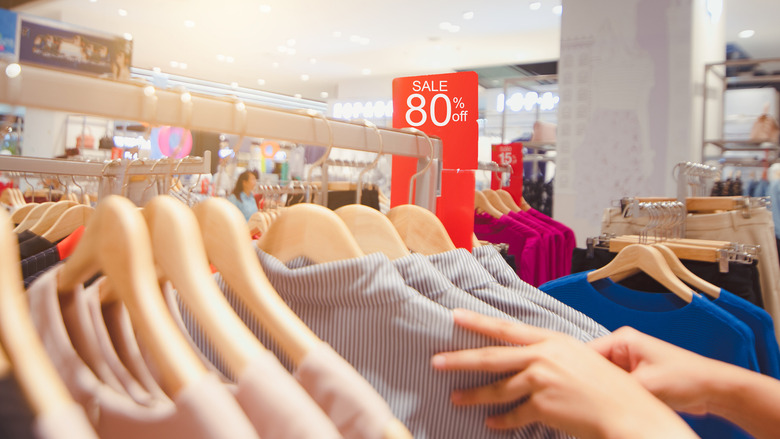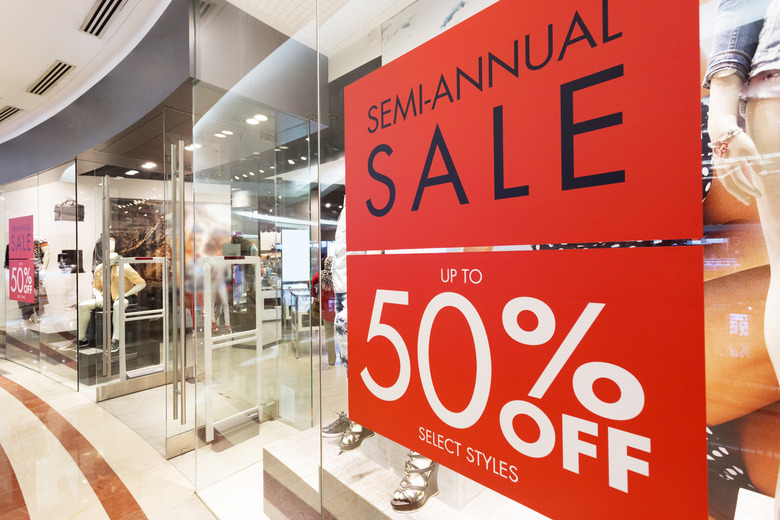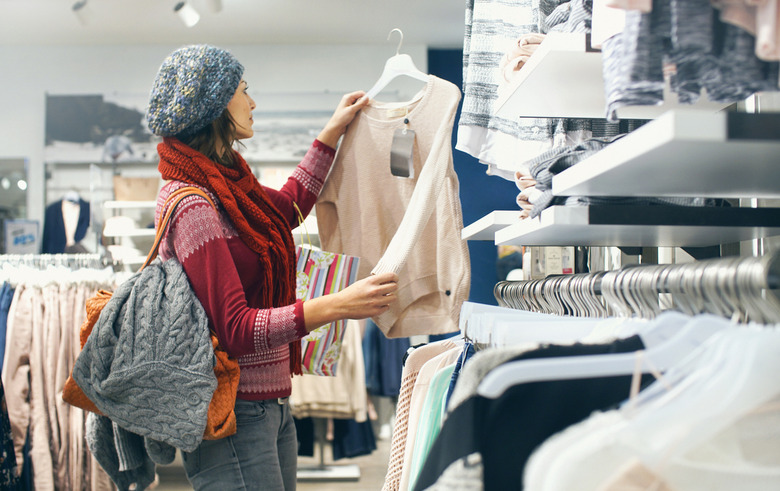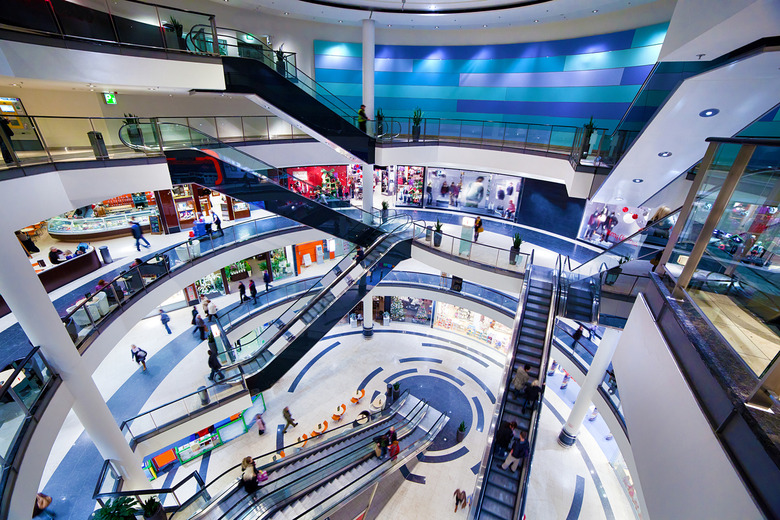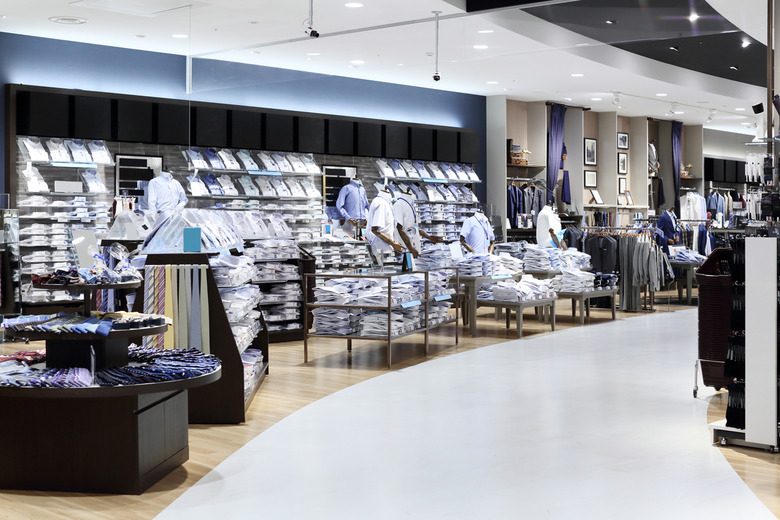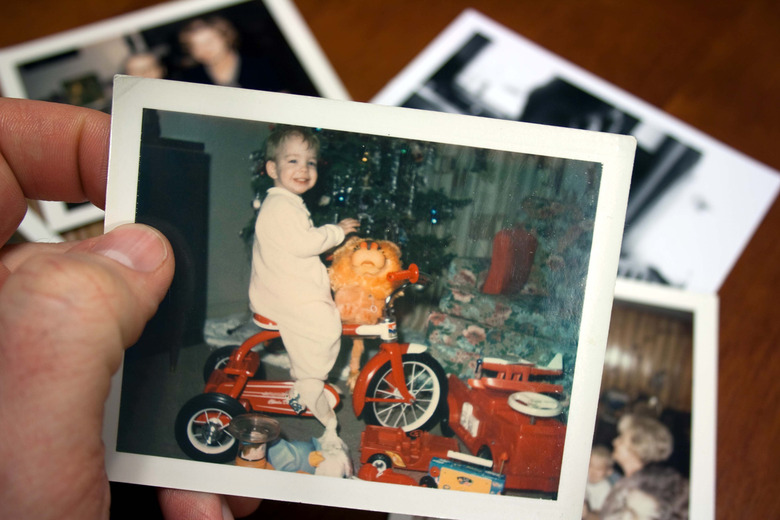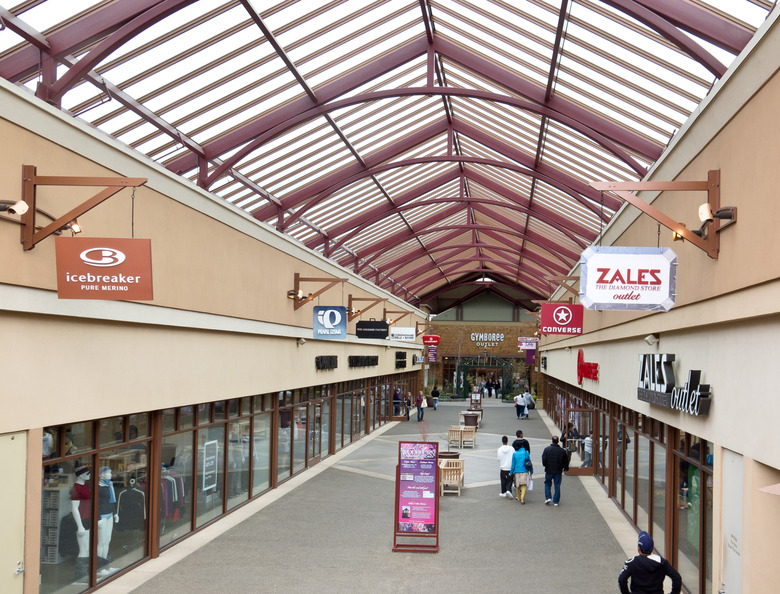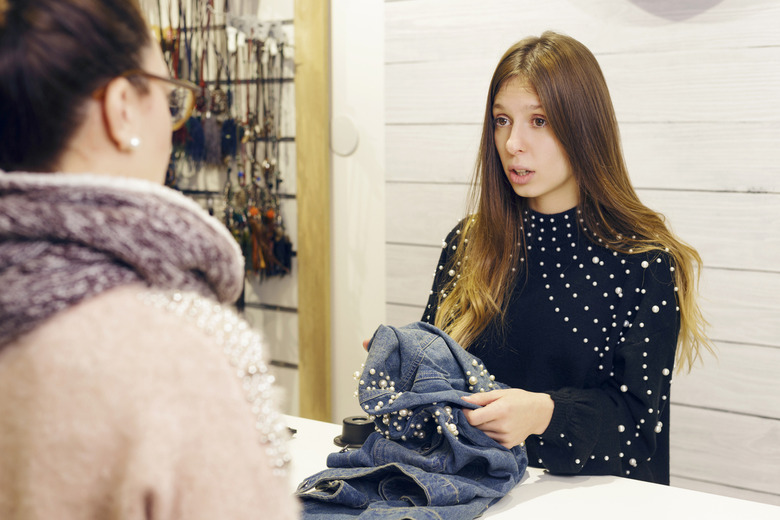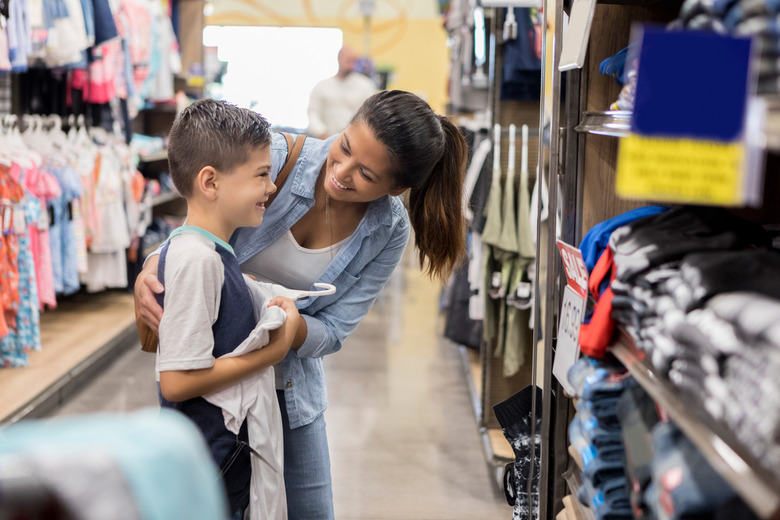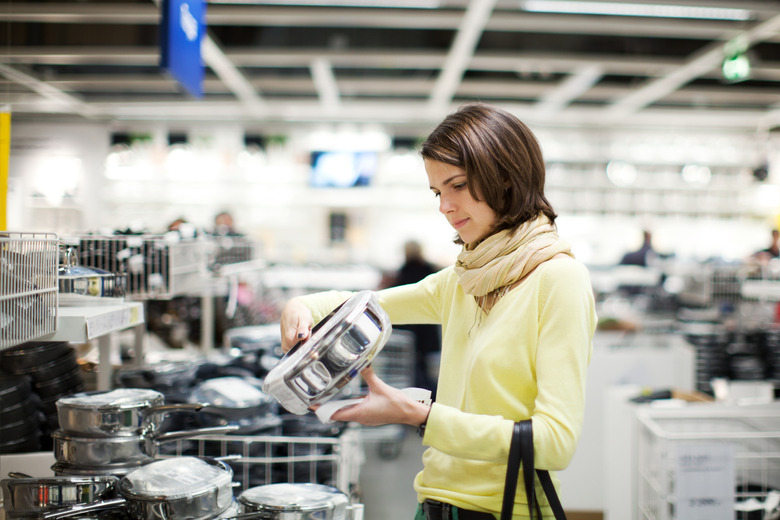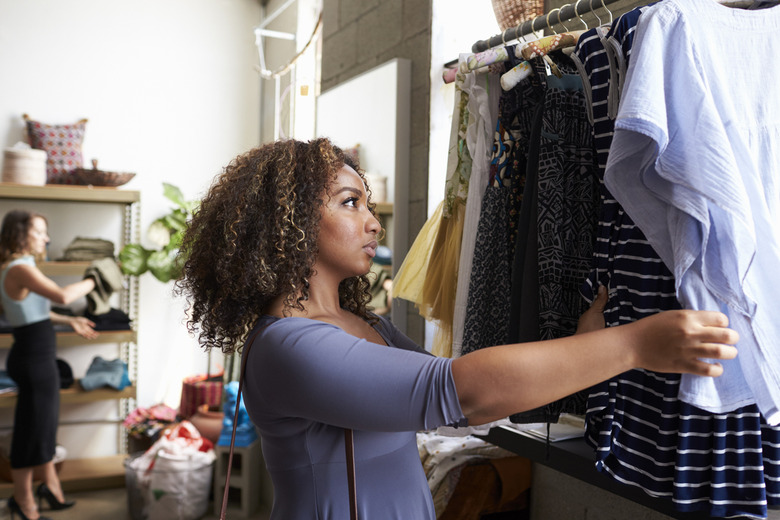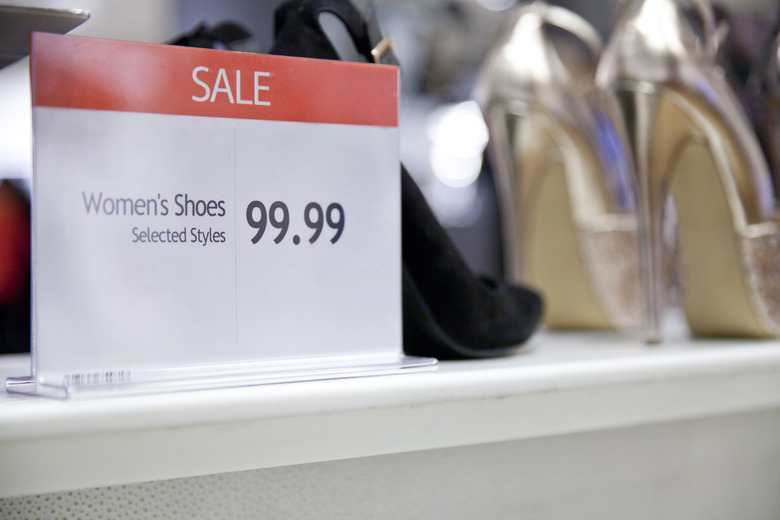Secrets Shopping Malls Don't Want You To Know
If you're a savvy shopper, then you may already know to be wary of the mall and the head games it plays. Everything about these sprawling shopping centers, from the colors and sounds in the stores to the layout (which puts supposed competitors right next to each other), are perfectly tailored to trick your senses into feeling something your body and mind wouldn't feel otherwise. Heck, even those free cups of hot cocoa have a nefarious purpose. So before you take your next trip to the mall, consider these 15 secrets shopping malls don't want you to know.
Big shopping carts are there to make you buy more
All of those massive shopping carts at the front of TJ Maxx and Old Navy aren't just there to help make your shopping easier — they're also intended to make you buy more. Big shopping carts leave a void that needs to be filled with goods, and shoppers will continue adding new items to their cart, whether they need them or not. This is one of the things grocery stores don't want you to know, but the need to fill a cart applies at the mall as well. To avoid overshopping, stick to a shopping list and forgo using a cart at all, opting to carry your goods in your arms instead.
Sale signs make you spend more
According to a study from MIT, a sale sign, when used correctly and not excessively, is one of the most effective ways to drive demand, regardless of whether or not the sale price is a bargain.
Color schemes are anything but random
Ever wonder why those sale signs are red? According to multiple studies, hues from the warm side of the color wheel — reds, oranges and yellows — draw customers into a store and stimulate the senses, so you're likely to see signage and lights in these shades outside of retailers. This strategic use of colors also partially explains why fast food restaurants are always red.
Clearance sections make you buy things you may not need
Clearance items are a genuinely good deal, with out-of-season items marked down to actual low prices. But the clearance rack can be a dangerous place and make you spend money on items you wouldn't buy otherwise. Clearance sections are messy and frequently feature signage that says it's your last chance to buy that deeply discounted sweater, so you feel like you're competing with others to get those goods. Instead of feeling like you need to get as many bargains as possible, focus on what you're spending and buying rather than what you're saving.
The stimuli are there to confuse and disorient you
Everything about malls, from the winding, confusing layout to the fountains, booths and lack of clocks are there to distract and disorient you. It's something called the Gruen transfer, named after Victor Gruen, the man who built America's first mall. This phenomenon is what happens when you go into a shop with purpose but then get drawn in by all the sales, end caps and appealing products around you, forget why you came to the store in the first place and spend more money than you originally intended.
Customers naturally move from right to left
Americans are right-dominant, and stores take advantage of this. Most customers will turn to the right when entering a store, so retailers will put their most profitable, pricey and trendy items to the right to entice them.
Free food makes you want luxury goods
You may think that free coffee and chocolate are just nice touches for the customer experience, but nope, they make you spend more. According to a study from the Journal of Consumer Research, eating just one piece of free chocolate when shopping makes customers more willing to buy big-ticket items such as laptops, watches and designer clothing.
Malls play up nostalgia
There's a reason why advertisements play up nostalgia. According to a study from the Journal of Consumer Research, nostalgic feelings heighten our desire for social connection and lessen our desire for money. If you are reminded of holidays past with your parents right before you see a set of earrings that are just like the ones your mom used to wear but lost, you'll be more willing to let go of that money to make mama smile.
Outlet stores are basically their own brands
You may think you're getting undersold or slightly damaged designer merchandise at outlet shops, but think again. According to a letter four members of Congress wrote to the FTC, some analysts suggest that up to 85 percent of the merchandise sold at outlet shops is manufactured exclusively for those outlets, and it's typically of a lower quality than the name brand it's marked as. So, while you may be getting a designer coat for cheap at an outlet, it's likely the item was made with lesser-quality fabrics, was likely not designed by the designer team and was never sold at a higher price.
Rude sales associates make you want to buy
High-end stores like Louis Vuitton or Yves Saint Laurent are notorious for having rude sales staff, who won't give you the time of day if you aren't wearing the right shoes or watch. While you may think that rejection from a sales associate who looks like a supermodel may discourage people from ever stepping foot inside a Gucci again, that rude attitude and rejection makes people think those stores are even more worthy of their dollar and strengthens their desire to buy, according to the Journal of Consumer Research. Think of it as wanting to fit in with the cool kids in school.
Desirable items are at eye level
Items that retailers really want to move are placed at eye level and on end caps. It's one of the same tricks supermarkets use to make you spend more money. People will be more swayed to purchase items that are right in front of their faces. There's also an eye level for children. The season's hottest toys and accessories will be placed on lower shelves to encourage kids to beg their parents for whatever this year's big-ticket item may be.
Slow music plays to make you meander
Shops will play slower, medium-volume music to encourage customers to take their time shopping and meander through the store. Meanwhile, higher-end places will play classical music, and for good reason. It makes people think items are worth more money, and thus they will spend more and make bigger purchases.
Smells influence your shopping habits
A study from the Journal of Consumer Research showed that when scents are related to products people are looking at, consumers will spend more time lingering in stores, processing their surroundings and potentially making more purchases. If you've ever wondered why the kitchen section of a department store smells like cookies, this just might explain why.
Stores want you to touch the merchandise
Tactile experiences are important for making purchases. According to the Journal of Consumer Research, simply touching an object leads to an increase in perceived ownership of that object, meaning you already have a connection to it and are more likely to buy it.
Prices end in .99 for a reason
Ever wonder why every price is $19.99 instead of just $20? Well, it's called the "left-digit effect," and it works insanely well. No matter what, if you see an item that's $29.99, it will feel like it costs closer to $20 than it does to $30. You see that 2, and your mind runs with it. This pricing works exceptionally well at barrier levels. Something that's $199.99 seems cheaper than something that's $201, even though they're essentially the same price. Of course, this is also a common tactic on restaurant menus, making it one of the many secrets restaurants don't want you to know.
More from The Daily Meal:
Genius Hacks Every Costco Shopper Should Know
Money Mistakes Parents of College Students Make
15 Easy Ways to Start Saving Money
